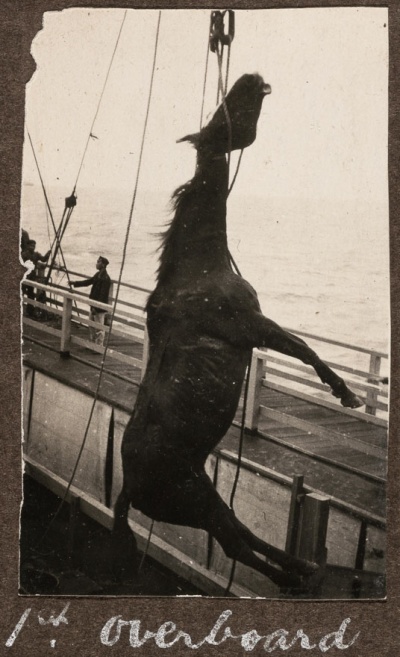Articles
The 1918 influenza pandemic

The lethal influenza pandemic that struck New Zealand between October and December 1918 killed more than 8600 people in two months. No other event has claimed so many New Zealand lives in such a short time.
-
Page 2 – The pandemic begins abroad
The 1918 influenza pandemic was commonly referred to as ‘the Spanish flu’ but it did not originate in Spain.
-
Page 3 – The pandemic hits New Zealand
Many people believed that the second wave of the 1918 influenza pandemic arrived in New Zealand in the form of ‘a deadly new virus’ on board the RMS Niagara.
-
Page 4 – Uneven rates of death
No other event has killed so many New Zealanders in so short a space of time. While the First World War claimed the lives of more than 18,000 New Zealand soldiers over a four-
-
Page 5 – Response to the influenza pandemic
There were consistencies in New Zealand's response to the influenza pandemic. Many of these arose out of a circular telegram the Health Minister, George Russell, issued to all
-
Page 6 – Aftermath
Robert Makgill Following the pandemic speculation continued over the Niagara's involvement in bringing the virus to New Zealand.
-
Page 7 – North Island influenza death rates
Death rates from the 1918 influenza pandemic for towns and counties in the North Island
-
Page 8 – South Island influenza death rates
Death rates in South Island towns and counties from the influenza pandemic
Battle of the Somme

A truly nightmarish world greeted the New Zealand Division when it joined the Battle of the Somme in mid-September 1916. Fifteen thousand men of the Division went into action. Nearly 6000 were wounded and 2000 lost their lives. More than half the New Zealand Somme dead have no known grave.
- Page 2 - Overview'Somme. The whole history of the world cannot contain a more gruesome word.' This is how one German officer described the Battle of the Somme in
Passchendaele activities

NCEA2 activities relating to New Zealand's role in the fight for Belgium during the First World War
- Page 3 - Remembering the deadAcknowledging the sacrifices of those who served or died was an important way for communities, including schools, to make sense of the human cost of
Passchendaele: fighting for Belgium

Ever since 1917 Passchendaele has been a byword for the horror of the First World War. The assault on this tiny Belgian village cost the lives of thousands of New Zealand soldiers. But its impact reached far beyond the battlefield, leaving deep scars on many New Zealand communities and families.
- Page 3 - The Passchendaele offensiveThe failed attempt to capture the town of Passchendaele saw more New Zealanders killed in one day than in any other military campaign since
Tangiwai disaster

New Zealand's worst railway disaster occurred 60 years ago on Christmas Eve 1953, when the Wellington–Auckland night express plunged into the swollen Whangaehu River near Tangiwai. Of the 285 people on board, 151 were killed. The tragedy stunned the world and left a nation in mourning.
-
Page 5 – Death at Tangiwai: a class affair
Survival at Tangiwai depended on which class of carriage you were travelling in.
Anzac Day

First observed in 1916, Anzac Day - 25 April - commemorates those killed in war as well as honouring returned servicemen and women. The ceremonies that are held at war memorials across the country, or in places overseas where New Zealanders gather, are rich in tradition and ritual.
-
Page 9 – The red poppy
The red poppy has become a symbol of war remembrance the world over. In many countries it is worn around Armistice Day (11 November), but in New Zealand it is most commonly
Related keywords
- WW1
- horses
- gallipoli campaign
- casualties
- commonwealth war graves commission
- WW1 maps
- cemeteries
- palestine campaign
- sinai campaign
- egypt
- passchendaele offensive
- western front
- united kingdom
- funerals
- religion
- allies
- ottoman army
- taranaki
- new zealand wars
- tangiwai disaster
- police
- disease
- influenza pandemic
- riverton
- nightcaps
- health
- epidemic
- maori health
- robert makgill
- nurses
- poetry
- james k baxter
- writing
- 1970s
- whanganui river
- disasters
- railways
- battle of the somme
- WW1 home front
- karori
- wellington college
- battle of messines
- british army
- german army
- battle of verdun
- anzac
- anzac day
- artillery
- david gallaher
- belgium
- public holidays
- red poppy
- RSA
- samoa
-
Main image: Dead horse lowered overboard
A dead horse about to be lowered overboard from the troop transport Knight Templar (HMNZT 22).










